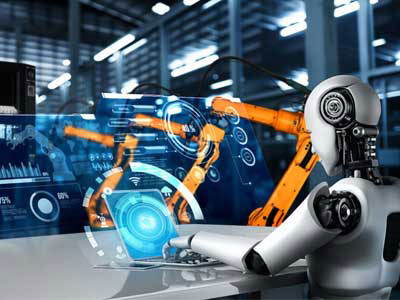Key Takeaway
Robots play a vital role in construction and mining, enhancing efficiency and safety. In construction, robots assist in bricklaying, welding, and demolition. They ensure precision and reduce human labor. In mining, robots perform tasks like hauling, drilling, and blasting. Autonomous haul trucks and drilling robots are essential in open-pit mining. Robotic conveyor systems transport materials efficiently. These robots improve productivity and reduce the risk of accidents. Overall, robots are transforming both construction and mining by automating labor-intensive tasks and increasing operational efficiency.
Site Surveying and Mapping
In the construction and mining industries, accurate site surveying and mapping are crucial for successful project execution. Robots equipped with advanced sensors and GPS technology perform these tasks with remarkable precision. They can survey large areas quickly, creating detailed maps and 3D models. This efficiency not only saves time but also ensures accurate data, reducing planning errors.
Drones, for instance, are used for aerial surveys, capturing high-resolution images for topographical maps. Ground-based robots, equipped with LiDAR, navigate complex terrains to gather data. Automating these tasks enhances efficiency, minimizes human error, and reduces labor costs, significantly improving industrial operations.

Automated Construction Equipment
Robotic automation is transforming construction with advanced machines that perform diverse tasks, such as excavators, bulldozers, and other heavy machinery. These robots can be operated remotely or autonomously, ensuring precision and safety. For instance, robotic bricklayers can lay thousands of bricks daily, maintaining consistent quality and significantly outpacing human workers. Automated concrete mixers and pavers ensure materials are mixed to exact specifications and poured evenly, reducing waste and enhancing structural integrity. By speeding up project timelines and mitigating the risk of on-site accidents, these machines create a safer work environment. Additionally, robots can work around the clock, increasing productivity and ensuring projects stay on schedule.
Implementing automated construction equipment reduces the need for manual labor in hazardous conditions. This technology not only boosts efficiency but also ensures consistent quality in construction activities. Robots handle repetitive and labor-intensive tasks like bricklaying, concrete pouring, and road paving with unmatched precision and speed. These advancements contribute to safer construction sites and more reliable project outcomes. By leveraging robotic automation, the construction industry can achieve higher productivity levels while maintaining safety standards, ultimately benefiting both workers and project timelines.
Safety Monitoring
Safety is crucial in construction and mining, and robots play a vital role in enhancing workplace safety. Equipped with cameras, sensors, and artificial intelligence, these robots monitor sites for potential hazards, ensuring compliance with safety regulations. They can detect gas leaks, structural weaknesses, and other dangers, providing real-time alerts to prevent accidents. For example, robots with thermal imaging cameras can identify overheating equipment or electrical faults before they become critical. Drones can inspect hard-to-reach areas, such as tall structures or deep mine shafts, without putting human workers at risk.
Implementing robots for safety monitoring helps companies proactively manage risks, protecting workers and reducing the likelihood of costly incidents. These robotic inspections are thorough and consistent, ensuring that safety standards are upheld. By continuously scanning the environment and analyzing data, robots provide valuable insights that contribute to safer and more efficient operations. By leveraging robotic technology, the construction and mining industries can enhance safety measures, prevent accidents, and maintain compliance with regulations, ensuring a safer work environment for all.
Maintenance and Repairs
Robots are revolutionizing maintenance and repair processes in construction and mining. Regular maintenance is crucial for the longevity and efficiency of equipment, and robots are well-suited for these tasks. They can conduct inspections, identify issues, and perform repairs with high precision. For instance, robotic arms can weld cracks, apply coatings, and perform other repair tasks accurately. Drones can inspect large machinery and infrastructure, identifying wear and tear that needs attention. Autonomous robots can also clean and lubricate equipment, ensuring optimal performance and reducing downtime.
Using robots for maintenance and repairs minimizes the need for manual intervention, reducing the risk of human error and injury. These robots can work in harsh environments and access confined spaces, performing tasks that would be challenging or dangerous for human workers. By ensuring equipment is well-maintained, robots help extend its lifespan and improve overall operational efficiency. This technology not only enhances equipment reliability but also ensures that maintenance tasks are performed consistently and accurately, leading to better outcomes and fewer breakdowns.
Resource Extraction
In mining, robots are leading the way in resource extraction, making the process safer and more efficient. Automated drilling rigs, robotic loaders, and haul trucks operate with precision, extracting minerals and other resources with minimal human intervention. These robots are designed to handle the demanding conditions of mining operations, working tirelessly to maximize output. For instance, automated drilling rigs can operate continuously, drilling to exact specifications and depths. Robotic loaders and haul trucks can transport materials from extraction sites to processing facilities, reducing the need for human drivers.
The use of robots in resource extraction not only increases productivity but also enhances safety. By reducing the need for human workers in dangerous mining conditions, robots help prevent accidents and injuries. Their precise and efficient operations minimize waste and environmental impact, contributing to more sustainable mining practices. By leveraging robotic technology, the mining industry can achieve higher productivity levels while ensuring the safety and well-being of workers, leading to more efficient and responsible resource extraction.
Conclusion
Robotics in construction and mining revolutionizes efficiency and safety. From autonomous vehicles to robotic arms, these technologies streamline operations, reduce costs, and enhance worker safety in hazardous environments. Innovations like AI-driven analytics optimize project management, while robotic exoskeletons mitigate physical strain. As these technologies advance, they promise to reshape the future of construction and mining, making processes smarter, faster, and safer.
